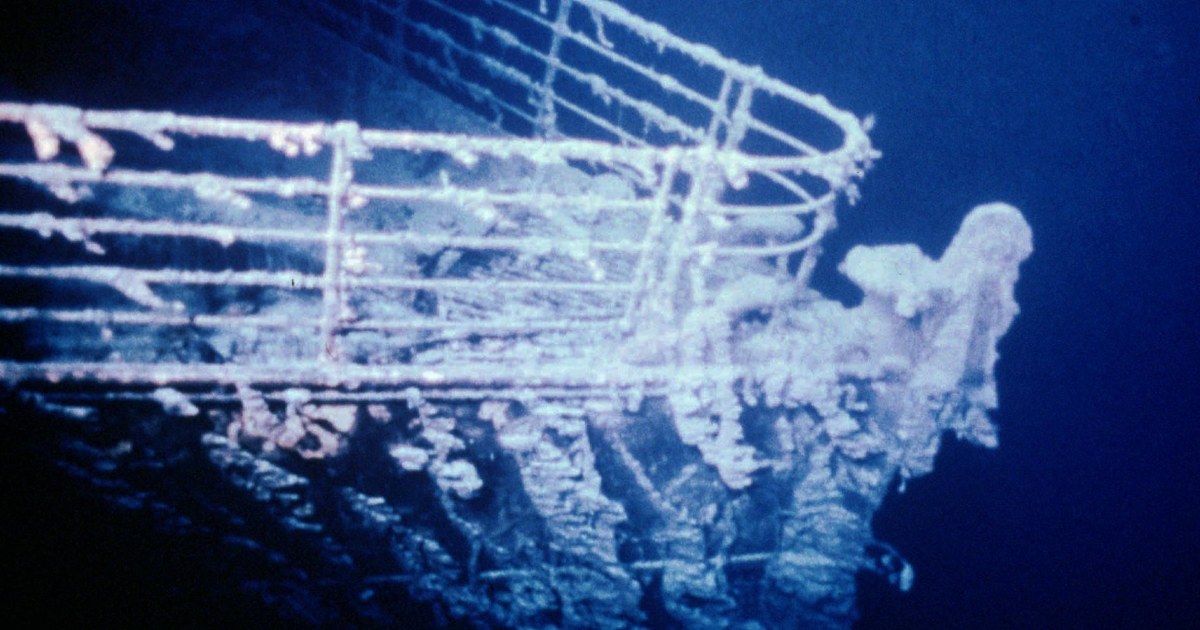#Submersible visiting Titanic wreck goes missing, prompting search

The U.S. Coast Guard is searching for a missing Canadian research submersible that disappeared on Sunday after it went to explore the wreck of the Titanic.
The 21-foot submersible and its five-person crew, from the Canadian research vessel Polar Prince, started a dive on Sunday morning, according to the Coast Guard. But the Polar Prince lost contact with the vessel after an hour and 45 minutes. It is unclear whether any tourism passengers were on board.
The missing submersible was part of an OceanGate Expeditions tour to explore the Titanic wreckage, located 900 nautical miles east of Cape Cod, Massachusetts.
The private company, which charters trips to explore the wreckage with its research teams, said it was working with numerous government agencies to aid in the rescue of the crew on its submersible.
“Our entire focus is on the crew members in the submersible and their families, we are deeply thankful for the extensive assistance we have received from several government agencies and deep sea companies in our efforts to reestablish contact with the submersible,” the company said in a statement.
OceanGate’s submersibles have shorter power cycles than submarines and are tied to a mother ship (the Polar Prince in this instance) when operating far from land. Submarines, by contrast, can typically travel long distances independently and use a port as a home base.

The Coast Guard has coordinated a search to find or recover the submersible and any survivors. The Canadian Coast Guard is also aiding in the search by providing a P8 Poseidon aircraft that has underwater detection capabilities.
Considered the world’s most famous shipwreck, the Titanic was an opulent 883-foot ocean liner. Thought to be “unsinkable,” it shocked the world in 1912 when it struck ice in the Atlantic Ocean and sank. More than 1,500 people died.
The wreckage was discovered in 1985, about 350 miles off the coast of Newfoundland, Canada. Surrounded by debris, the ship’s two main pieces are around 2,000 feet apart, according to a full-size scan that was released earlier this year.
Continued fascination with the Titanic has sparked a tourism industry around the ocean liner and its sinking, particularly after the release of the eponymous 1997 film from director James Cameron.
OceanGate’s expeditions include a 10-day trip with 18 dives off of a larger boat to a maximum depth of 12,800 feet, according to the company.
The company’s website said that on visits to the Titanic site, it collects images, videos and laser and sonar data for scientific study, in order to document the condition of the wreck and gather information about the flora and fauna using the sunken ship as their maritime home.
According to the OceanGate website, the fees tourism customers pay to accompany researchers “underwrite the mission, the participation of the science team, and their own training.” Individuals may pay as much as $250,000 to join the exploration, The New York Times reported last year.
EDITOR’S NOTE: This story has been updated to reflect that the missing vessel is a submersible, not a submarine, according to its operator. The U.S. Coast Guard uses the terms interchangeably.
If you liked the article, do not forget to share it with your friends. Follow us on Google News too, click on the star and choose us from your favorites.
For forums sites go to Forum.BuradaBiliyorum.Com
If you want to read more News articles, you can visit our News category.



